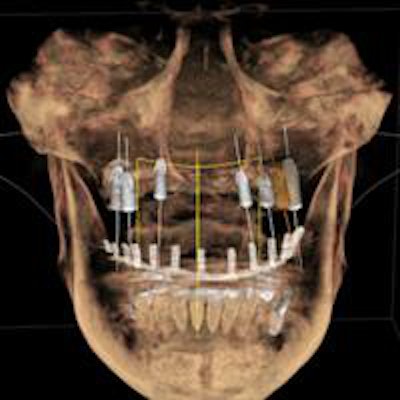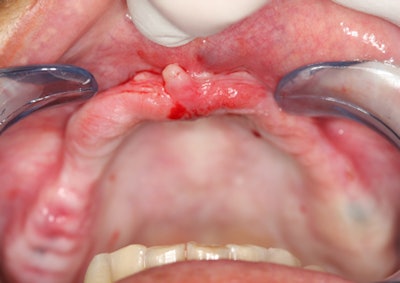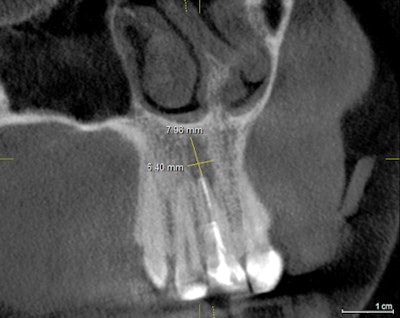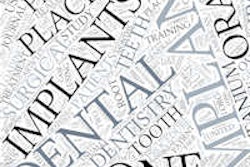
In the first part of this series, I presented some of the indications for a cone-beam CT (CBCT) scan. But I wanted to illustrate how this technology has helped my practice by showing images eight years apart.
 Anthony Ramirez, DDS.
Anthony Ramirez, DDS.I will give you images used from my first experience with CBCT technology and images from a scan that I obtained recently. The information gleaned from these scans has been undeniably instrumental in arriving at a correct diagnosis and revealing findings, which became the foundation for my treatment plans and clinical decisions. My 3D analysis of the most recent scan convinced a new patient to move forward with comprehensive treatment.
My 1st scan
The first scan I obtained was for a patient I was treating in conjunction with an oral surgeon. We presented the case and planned to reconstruct a severely resorbed edentulous maxilla. The patient was unable to use a poorly fabricated complete upper denture, and she became despondent and stopped socializing. She desired a fixed prosthesis so she could comfortably eat, smile, and function again.

After completing conventional diagnostic procedures and enlisting an oral surgeon, bilateral sinus augmentation and buccal block grafts were used in an effort to regenerate enough bone to secure eight or more implants.
With my first scan, we discovered that implants could only be placed in specific sites, as the expected results of the grafting were not favorable in all areas. Note the 3D skull view (figure 4) depicts the surgical scan appliance used and the markings for each maxillary tooth. Implant placement occurred within the specified sites, and the final prosthesis was secured to eight total implants and has been functioning for nearly five years, without any complications. The definitive prosthesis was inserted more than two years after the initial scan.
A direct result of having the maxillofacial boney anatomy at our fingertips was being able to develop the proper plan, so that the screw access holes could exit through the occlusal fossa of teeth and not interfere with the aesthetics of this case. In short, the surgeon, restorative dentist, and, most important, the patient benefited by having this information before the implants were placed.
A more recent scan
I recently scanned a patient who presented for a consultation to improve his smile and replace a number of missing teeth. The 25-year-old male in good health underwent all the conventional diagnostics, including clinical, periodontal, photographic, and periapical radiographic examination.

A number of findings made it clear that the patient required an enhanced CBCT evaluation to complete a dental examination. As usual, the 3D images were helpful in many ways to present the case, and they gave the patient the necessary information to move forward with a full-mouth rehabilitation.
Please review and consider how the CBCT images aided both diagnosis and case acceptance for these two patients.
The next part in this series will discuss some of the most commonly seen conditions in a dental practice, including extensive decay, periodontal disease and bone loss, endodontic pathology, missed canals, sinus pathology, internal resorption, and missing teeth.
Anthony Ramirez practices in Brooklyn, NY. He can be reached at [email protected] or via his website.
The comments and observations expressed herein do not necessarily reflect the opinions of DrBicuspid.com, nor should they be construed as an endorsement or admonishment of any particular idea, vendor, or organization.



















